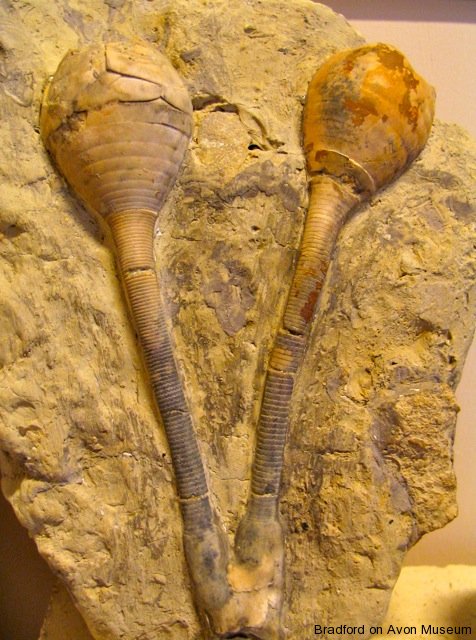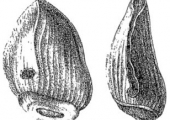.
Bradford on Avon People:
Joseph Chaning Pearce (1811-1847)
Bradford on Avon, Wiltshire
.
Joseph Chaning Pearce, in the course of a short life, built up one of the largest collections of fossils in the country in the early nineteenth century.
.
.
.
.
.
 He was born in the house that was until recently the Liberal Club, 5 St Margaret’s Street in 1811, the only son of James Pearce who was a surgeon there. His mother Mary Ann, was the daughter of James Clement, a woollen cloth manufacturer in Frome, Somerset. Both parents were nonconformists and Joseph was baptised at the Morgan’s Hill Independent Church, which is now the United Reform Church, St Margaret’s Hill.
He was born in the house that was until recently the Liberal Club, 5 St Margaret’s Street in 1811, the only son of James Pearce who was a surgeon there. His mother Mary Ann, was the daughter of James Clement, a woollen cloth manufacturer in Frome, Somerset. Both parents were nonconformists and Joseph was baptised at the Morgan’s Hill Independent Church, which is now the United Reform Church, St Margaret’s Hill.
He took a keen interest in collecting fossils from an early age and walks with his parents were frequently punctuated by stops to search for them. James himself was an early collector in Bradford, as were William Fifeld Adye and Arthur Adye, both also medical men. After first being apprenticed to his father, he went to Guy’s Hospital in London to study and qualify as a surgeon.

Back in Bradford and practising as a surgeon, he continued to build up his collection, aided by an international network of like-minded people who were happy to swap their specimens for the fossils that were coming from the Bradford Clay. Chief among these fossils were those of the sea lily Apiocrinites.
He was the first to recognise, from one of his own specimens which is now in the Natural History Museum in London, that ichthyosaurs, the Jurassic dolphin-like marine reptiles, must have borne live young. His paper on the beautifully-preserved remains of squid-like animals from the Oxford Clay of Christian Malford which he named Belemnotheutis led to a clash with Richard Owen, later Sir Richard Owen, the Keeper of the Natural History Museum..
 He married Amelia Stancomb, daughter of a Trowbridge clothier and they had several children; a daughter, Mary Ann, married Edward Payson Wills, later Sir Edward, of the Bristol Wills tobacco family.
He married Amelia Stancomb, daughter of a Trowbridge clothier and they had several children; a daughter, Mary Ann, married Edward Payson Wills, later Sir Edward, of the Bristol Wills tobacco family.
Joseph’s health was not good and in 1845 he retired and the family moved to a large house at Lambridge, Bath which he named Montague House, after the original British Museum building. A wing at the back was his museum which housed his fossil collection. However, he didn’t live much longer, dying of a lung complaint in 1847.
The collection was jointly bought by members of the Stancomb and Wills families and Bristol City Council in 1915 and is preserved in Bristol City Museum & Art Gallery. Some specimens are on display in Bradford on Avon Museum.
.



